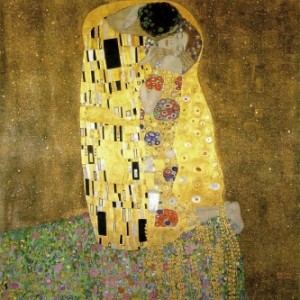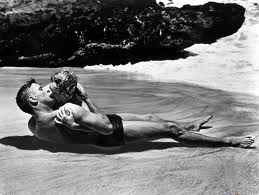By a fortuitous happenstance, Austrian painter, Gustav Klimt’s masterpiece, “The Kiss”, survived the German occupation of Austria during WW II. Adolph Hitler and Hermann Goring considered all modern art “degenerate” but made an exception of the iconic Klimt painting, “The Kiss”, in the Austrian National Belvedere Museum where it had been displayed since 1908.
However, many of Klimt’s canvases along with hundreds of treasures by other artists were not so fortunate. Most of these irreplaceable pieces of art were confiscated from Jewish galleries and victims of the Holocaust and kept “safe” in a castle in Southern Austria…until the night of May 7, 1945. Germany had signed their surrender to be in effect the next day. In a final act of destruction, the SS laid explosives in the castle, lit the fuse and walked out. The castle burned for days and not a single work of art survived.
_______________
Auguste Rodin originally intended his sculpture “The Kiss” to represent Dante’s “Gates of Hell” and the consequences of crossing the line between lust and love.
The tale behind “The Kiss” and crossing that line is a 14th century tragedy with which Dante was familiar and included in his epic poem, “The Inferno.”
As the story goes: Francesca da Rimini, a young and innocent woman was tricked into marriage to Gianciotto, a wealthy but disfigured and uncouth aristocrat. She fell passionately in love with Paolo, a handsome and elegant nobleman…who happened to be Gianciotto’s brother. Gianciotto caught the two lovers together and lunged at Paolo with a sword, accidentally killing Francesca who had stepped between the two men. Gianciotto then turned on his brother, Paolo, fatally piercing him with the same sword.
Francesca and Paolo were buried in the same tomb. Five centuries later, Rodin’s sculpture, “The Kiss”, is immortalized as a world wide symbol of erotic passion.
_______________
The greatest beach-kiss scene in film was made in 1953 in a tiny cove on Oahu, in the Hawaiian Islands. The film was adapted from James Jones’ excellent novel, “From Here to Eternity.” Not only does your devoted blogger recommend this read, but it was voted one of the 20th century’s best by the Modern Library Board.
Take a look at this video and you will see why Burt Lancaster and Deborah Kerr made movie history!
Click here if unable to view the video.




Great tales of love, passion, tradgedy…, Kirby. The scale seems to have no bounds, but is it not an ideal place for the role of art? Art likewise has no bounds. It is an attempt to express human feelings, reactions. It is a tangeble expression of our efforts to deal with complexities that we just can’t seem to get our arms around. Thank you. Vic
This is excellent. I never would have known all this.
Most beautiful and informative discussion. I agree with Dede…never would have known all of this. It breaks my heart to know we were deprived of seeing the full volume of Klimpt’s work.
Thank you for the depth of your blog and the comparison of art bringing us all the way to the 20th century. It’s all about the passion!